Macroeconomic Reports
The Melbourne Institute measures a variety of macroeconomic indicators, from the drivers of economic growth to the sentiments underpinning the nation’s economic outlook.
The Consumer Attitudes, Sentiments and Expectations in Australia Survey, known as CASiE, is a monthly survey of Australian households.
Started in 1975, the Survey gauges public opinion on topics such as the state of the Australian economy, prospects for employment and expectations of price changes.
Conducted across the nation, CASiE provides valuable and timely signals about consumer perceptions of the state of the economy.
Our indicators are widely reported in the media and are referenced by economists nationwide. They are published at monthly or quarterly intervals, with Time Series Data also available.
Subscription reports
Our macroeconomic reports include:
- Westpac–Melbourne Institute Leading Index of Economic Activity
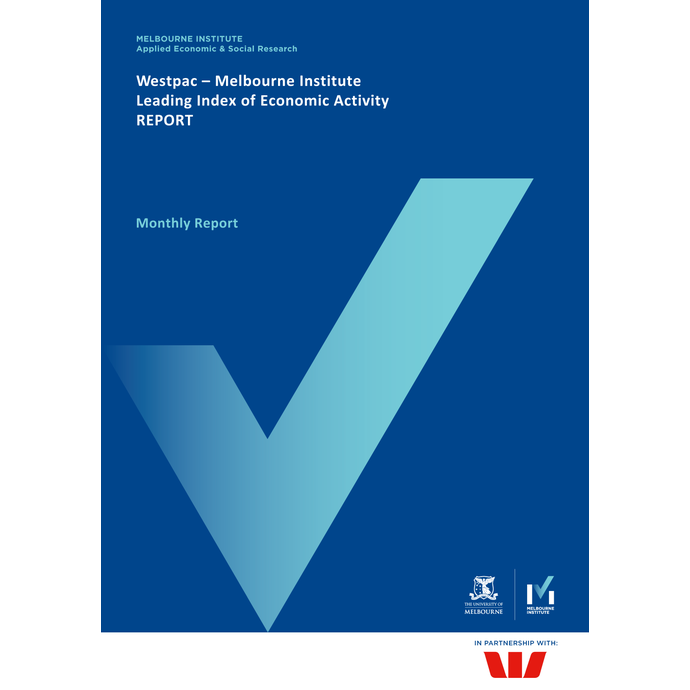
Westpac–Melbourne Institute Leading Index of Economic Activity
This report examines movements in the leading indicator of economic activity in Australia. It is designed to anticipate and identify turning points in the economy.
The Index is a summary measure and includes information from:
- Local financial, housing and labour markets
- Consumer expectations about activity and unemployment, and
- International economic activity.
Publication Frequency: Monthly
ISSN: 2203-1855 (Online)
Available Options: Annual subscription, Time Series DataEnquiries: macro-melb-inst@unimelb.edu.au
- Westpac–Melbourne Institute Survey of Consumer Sentiment
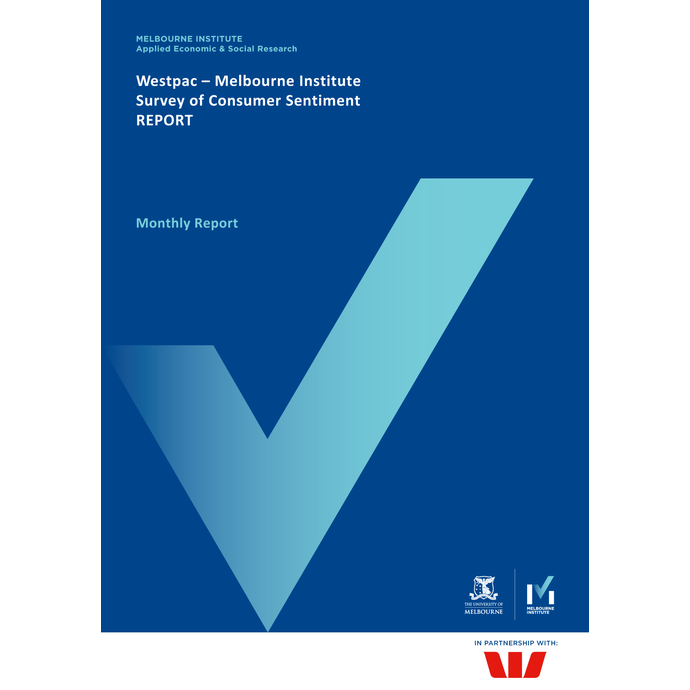
Westpac–Melbourne Institute Survey of Consumer Sentiment
The Consumer Sentiment Index measures changes in the level of consumer confidence in economic activity. It comprises five indices that reflect consumers’ evaluations of:
- Their household financial situation over the past year and the coming year
- Anticipated economic conditions over the coming year and the next five years, and
- Buying conditions for major household items.
Consumers are also surveyed about buying conditions for cars and dwellings, the wisest place for savings, and economic news recall.
Publication Frequency: Monthly
ISSN: 1836-4217 (Online)
Available Options: Annual subscription, Time Series DataEnquiries: macro-melb-inst@unimelb.edu.au
- Westpac–Melbourne Institute Survey of Consumer Sentiment: NSW, Victoria, Queensland, Western Australia, South Australia, Tasmania
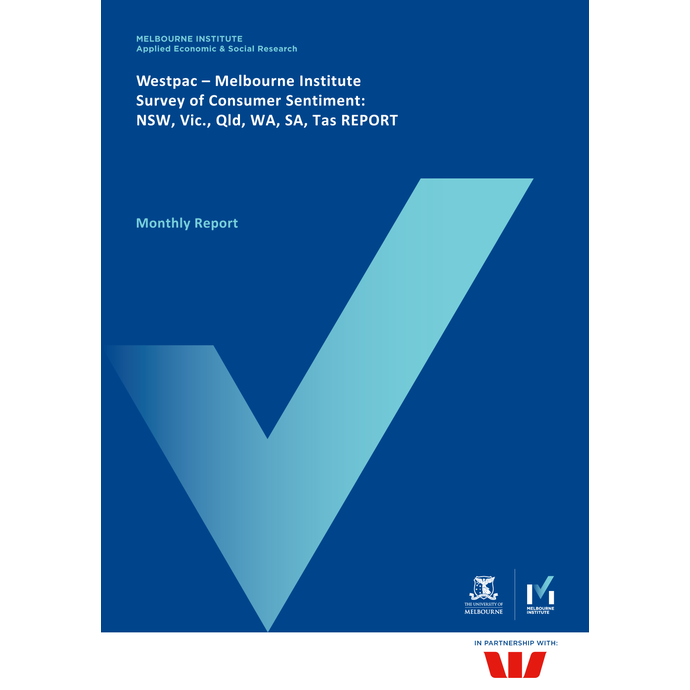
Westpac–Melbourne Institute Survey of Consumer Sentiment: New South Wales, Victoria, Queensland, Western Australia, South Australia and Tasmania.
The Consumer Sentiment Index measures changes in the level of consumer confidence in economic activity. It comprises five indices that reflect consumers’ evaluations of:
- Their household financial situation over the past year and the coming year
- Anticipated economic conditions over the coming year and the next five years, and
- Buying conditions for major household items.
Consumers are also surveyed about buying conditions for cars and dwellings, the wisest place for savings, and economic news recall.
This report presents the Consumer Sentiment Index in relation to New South Wales, Victoria, Queensland, Western Australia, South Australia and Tasmania.
Publication Frequency: Monthly
ISSN: 1836-4225 (Online)
Available Options: Annual subscription, Time Series DataEnquiries: macro-melb-inst@unimelb.edu.au
- Westpac–Melbourne Institute Survey of House Price Expectations
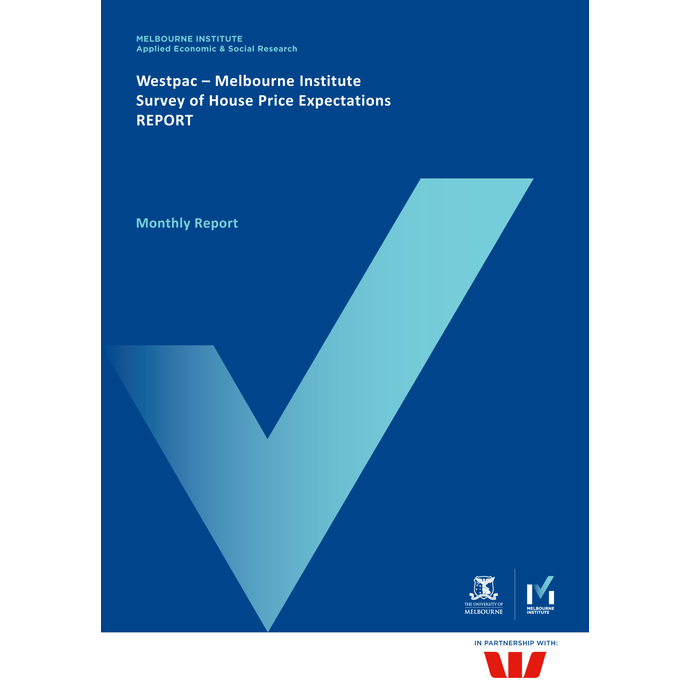
Westpac–Melbourne Institute Survey of House Price Expectations
This report presents consumers’ views about expected house prices in Australia. The Survey's response categories are:
- Rise by greater than 10 per cent
- Rise by 10 per cent or less
- Stay the same
- Fall by 10 per cent or less
- Fall by more than 10 per cent, and
- Don’t know.
Publication Frequency: Monthly
ISSN: 2203-1529 (Online)
Available Options: Annual subscriptionEnquiries: macro-melb-inst@unimelb.edu.au
- Westpac–Melbourne Institute Survey of Unemployment Expectations
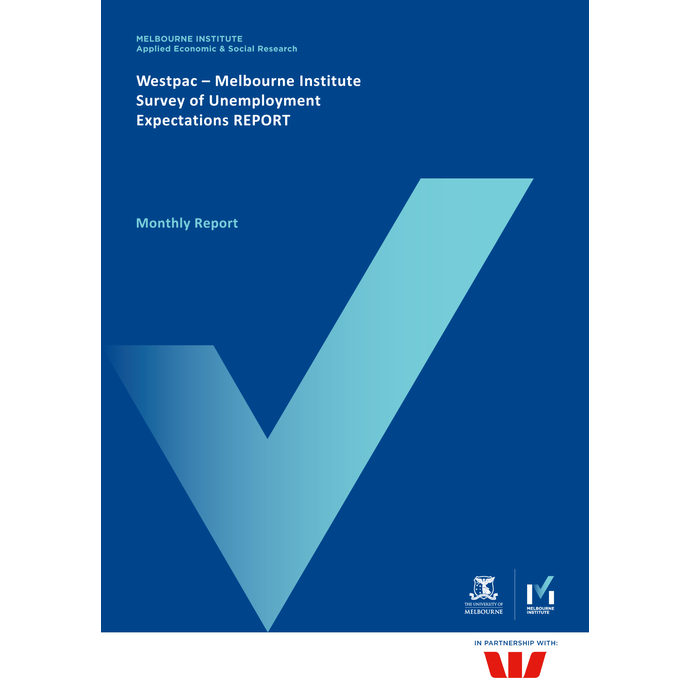
Westpac–Melbourne Institute Survey of Unemployment Expectations
This report presents consumers’ views about unemployment in the next twelve months. It aims to determine whether consumers believe Australia's unemployment rate will increase, decrease or remain the same.
Publication Frequency: Monthly
ISSN: 2203-1561 (Online)
Available Options: Annual subscription, Time Series DataEnquiries: macro-melb-inst@unimelb.edu.au
- Melbourne Institute Survey of Consumer Inflationary and Wage Expectations
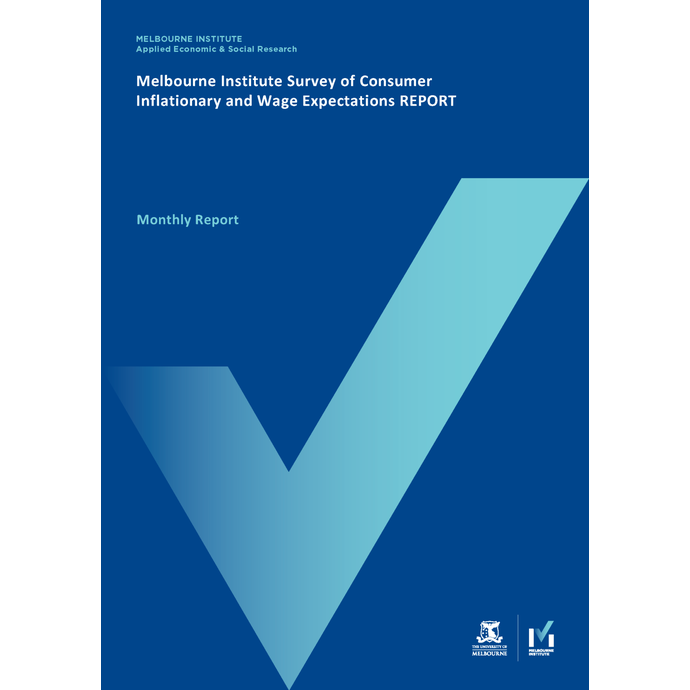
Melbourne Institute Survey of Consumer Inflationary and Wage Expectations
This report provides a direct measure of inflationary expectations, as consumers are asked whether, and by how much, they believe the prices of goods will change over the next twelve months.
The report also provides quarterly updates on wage changes over the past twelve months, and expectations of wage changes in the year ahead.
Publication Frequency: Monthly
ISSN: 1836-4233 (Online)
Available Options: Annual subscription, Time Series DataEnquiries: macro-melb-inst@unimelb.edu.au
- Melbourne Institute Monthly Inflation Gauge and Cost of Living
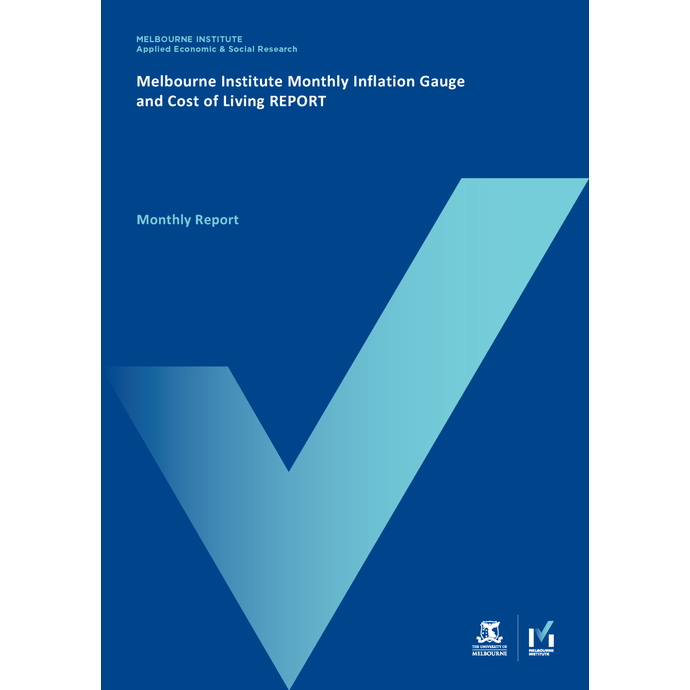
Melbourne Institute Monthly Inflation Gauge and Cost of Living
This report estimates month-to-month price movements for a wide range of goods and services in Australia and constitutes Australia’s longest running measure of monthly inflation. The report also provides month-to-month movements in the Cost of Living of selected demographic groups (age pensioners, pensioners and beneficiaries, employees, other government transfer recipients and self-funded retirees).
The report is based on the Australian Bureau of Statistics’ methodology for calculating the quarterly consumer price index.
Publication Frequency: Monthly
ISSN: 2206-2017 (Online)
Available Options: Annual subscription, Time Series DataEnquiries: macro-melb-inst@unimelb.edu.au
- Melbourne Institute State Leading Indexes of Economic Activity

Melbourne Institute State Leading Indexes of Economic Activity: New South Wales, Victoria, Queensland, South Australia, Western Australia and Tasmania
The Leading Indexes of State Economic Activity are summary measures of the growth prospects for New South Wales, Victoria, Queensland, South Australia, Western Australia and Tasmania. The Indexes include state-specific information from a number of sectors and markets (such as housing, retail trade and labour) as well as state-specific information from consumer expectations about activity and unemployment. This information is augmented by financial factors, and commodity prices for the resource intensive states. The Indexes predict growth in each state (relative to its trend) in three to nine months’ time. The report is published monthly and provides the latest information for these Indexes.
Publication Frequency: Monthly
Available Options: Annual subscription, Time Series DataPrevious issues: Please contact the Melbourne Institute.
Enquiries: macro-melb-inst@unimelb.edu.au
The Melbourne Institute’s macroeconomic reports and Time Series Data are available via calendar-year subscription or single-issue purchase. Find out more about subscribing.
Free reports
We also produce a series of free publications, including: